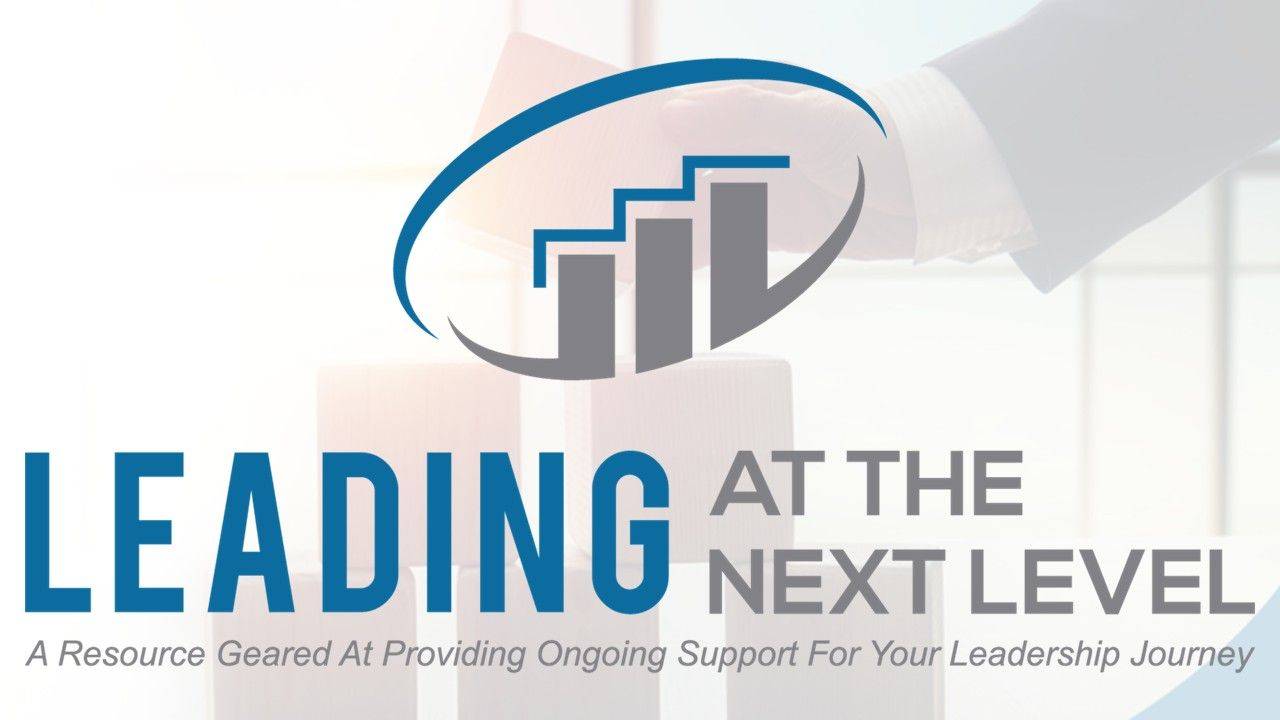Handling Pressure & Responding Calmly
The art of responsiveness requires listening (to build a foundation so we can adapt our response to our team’s needs) and investing in each responsive relationship (to give or receive mentorship), but quick decisions under pressure can sacrifice the influence we’ve worked so hard to earn - if we’re unable to respond calmly.
As we looked at giving feedback with respect, I hit on the concept of emotional intelligence. Cindy and I have written numerous lessons on the topic with the goal of providing practical steps anyone can apply to immediately increase their own emotional intelligence in any situation. I won’t go into that detail here, you’re welcome to access our Leading At The Next Level program and ask the chat agent to provide you with a list of the lessons that address it. I think I can better serve you with a story Cindy shares in one of those lessons - because it’s one of the best I’ve ever heard for illustrating the importance of handling pressure and responding calmly.
When Cindy and I met, she worked in the radiology department at our local hospital. One of the radiologists was usually a wonderful person to work around; bringing donuts, buying the entire team lunch, and often giving gifts to various members of the team. (Some gifts were a bit extravagant, but that’s an entirely different story…) On occasion, though, stress mounted and stuff hit the fan! In sharing the example in our lesson, Cindy paints a picture of a long hallway, all white, with patients lining each side. The frazzled radiologist bursts out, screaming obscenities and throws a folder full of x-rays down the hall - through the patients and their families. While not a daily occurrence, it certainly wasn’t something that happened only once.
Her point in sharing the story is that the radiologist did not effectively practice self-management - the second component of emotional intelligence. What I want you to consider here are the supervisor or managers you’ve interacted with over the years who responded similarly when they were under stress - even if what they were throwing wasn’t large files of x-rays. Assuming they were the least bit responsive, how did that impact your willingness to approach them, especially if you recognized the pressure they were dealing with? I realize there are times where we have no choice but to interact with someone like this, but I also know we avoid them at all cost when there is an option.
Throughout The Values Advantage, I shared examples of how I’ve watched my friend Craig lead his team - completely based on their five core values - since meeting him and his family during the summer of 2021. In addition to the significant growth in the first company they purchased, they’ve acquired three more since. I’ve seen few people juggle as many things as he has. I won’t begin to pretend that I’ve never seen him stressed; I most certainly have. But I’ve watched him consistently respond to that pressure calmly, modeling the compassion, humility, integrity, dependability, and family that make up the organization’s core values. In times where he’s felt his response missed the mark, I’ve personally seen him circle back with the individual to apologize and accept complete responsibility.
With each of those examples in mind, which would you prefer receiving a response from? Which would you seek mentorship from? And which do you believe would be more genuine in investing in responsive relationships? Now, which one would your team members compare you with? Calmness under pressure enhances responsive leadership! Before we look at how we can work to sustain responsive habits, I’ll challenge you to practice responding calmly in a high-pressure situation; if anyone counts on you for leadership, I’m sure you’ll experience one of those situations soon enough.
Sustaining Responsive Habits
In chapter three of The 21 Irrefutable Laws of Leadership, John Maxwell defines “The Law of Process” by saying “Leadership develops daily, not in a day.” The art of responsiveness follows the same process. Listening just when we can spare the time won’t cut it. Providing a timely reply on occasion isn’t enough. The investment in responsive relationships will be ongoing, especially if we hope to give or receive meaningful mentorship. And refraining from throwing our file folder down the hallway tomorrow is a solid starting point, but we can’t drop the ball the next day. Sustaining responsive habits is critical for any of these steps to take root.
Through Emerging Leader Development, Leading At The Next Level, and other various programs we’ve created, Cindy and I have written more than 200 hours of curriculum to date. Every single one, whether we deliver it in person or as part of one of our digital course offerings, closes with a specific call to action: identify ONE thing you pulled from the lesson that you can take action on immediately. But we don’t stop there. The final question in each “assessment” asks the participant to identify three additional steps they can put in place over time that will help them sustain that initial action step.
Even then, sustaining behavioral change is tough - and the primary reason we ever started offering Strategic Leadership Coaching. We all have good intentions for making changes that have a positive impact on the teams we lead, but the urgencies of life often derail us. The most valuable thing I’ve been able to offer through the coaching process has been helping the participant turn their initial action step into a behavior they perform routinely. Without keeping that new behavior top-of-mind until they’ve built it firmly into their everyday process, what they’ve been used to doing for years creeps back in - especially when stuff hits the fan. Even gentle accountability helps them create habits.
Responding quickly today is great, but has little lasting effect if we don’t do it over and over again. Unresponsive relationships don’t yield mentorship. Responding calmly the last time we were under tremendous pressure but blowing our top the time leaves our team wondering which version to expect on any given day. Regular responsiveness, intentionally adapted to our team’s needs and provided with extreme consistency, builds lasting leadership credibility.
One thing Cindy and I have seen over and over in organizations where the client-facing team members aren’t responsive is that this starts at the top. To quote John Maxwell once more, “Everything rises and falls on leadership.” To leave a responsive legacy throughout our organization and across the communities we serve, we have to set the example. We’ll tie this together by working through that next. Right now, though, I’ll challenge you to do a self analysis on your responsive habits; are you sustaining your best intentions? If you identify opportunities for improvement, is there a system you can put in place to build the necessary habits? The right systems allow us to be more effective - even under extreme pressure.
Leaving a Responsive Legacy
Think back to what I shared as we started this look at the art of responsiveness, specifically from Dan Pink’s book, When: The Scientific Secrets of Perfect Timing, where he shared:
“Email response time is the single best predictor of whether employees are satisfied with their boss, according to research by Duncan Watts, a Columbia University sociologist who is now a principal researcher for Microsoft Research. The longer it takes for a boss to respond to their emails, the less satisfied people are with their leader.”
Both the friends I mentioned in the examples that followed were extremely responsive; not just to the clients they served, but to everyone they interacted with. Those friends parting ways with organizations where executives held teams to an expectation they weren’t willing to live up to themselves should come as no surprise. Be honest, how long are you willing to deal with someone who isn’t responsive to your outreach; a boss, a service provider, or even someone you’re looking to for mentorship? I realized my highly DRIVEN behavioral style is a bit less patient than most folks, but unresponsiveness speaks more of not being valued regardless how much patience even the most SUPPORTIVE person can muster.
Here’s the kicker with both of the organizations my friends left: nearly everyone we’ve interacted with in each since do not practice responsive habits. I’ll repeat this once more for emphasis… I’m intentionally not sharing more about either because this is definitely not limited to those two companies. I can’t point to a business that I’ve dealt with over the last thirty years where the folks dealing directly with the public weren’t responsive but the executives were, at least not over the long haul. I’ve certainly seen exceptions, some where individuals were slow to respond but the leaders stayed on top of things and some where you could count on an immediate response from the front-line team member but rarely heard back from the executive. In either case, the mismatches were short lived. People do what people see. Like begets like. Call it what you want, everything always rises and falls on leadership.
To earn lasting influence with our teams, especially to a point where they can trust us to make quick decisions in the toughest situations, they’ll need to know they’re cared for. And when they feel cared for, that care carries over to what their customer experiences - even if that customer is the next team member downstream.
Throughout this look at leveraging leadership growth, we’ve wrapped up each segment with a reference to trust, legacy, or a combination of the two. The same holds true here. By listening intently so we can adapt to our team’s needs and provide the correct response quickly, we’re making a sound investment into those relationships. Through responsive relationships, any mentorship offered is more likely to be welcomed - regardless of which side of the equation we’re on. As we build habits to sustain this level of responsiveness, even if that initially requires us to create systems to support those new behaviors, we provide an example for everyone we interact with; one that leaves a responsive legacy and inspires future leaders. I’ve certainly experienced this in my life, and I’ll bet you have too. We’ll never invest the time necessary for any of this, though, unless we genuinely value others and we’re dedicated to being available. We’ll work through that next. Until then, I’ll challenge you to consider any scenarios where you’ve dropped the ball or left someone hanging. How can you respond to that past request with renewed effort?




